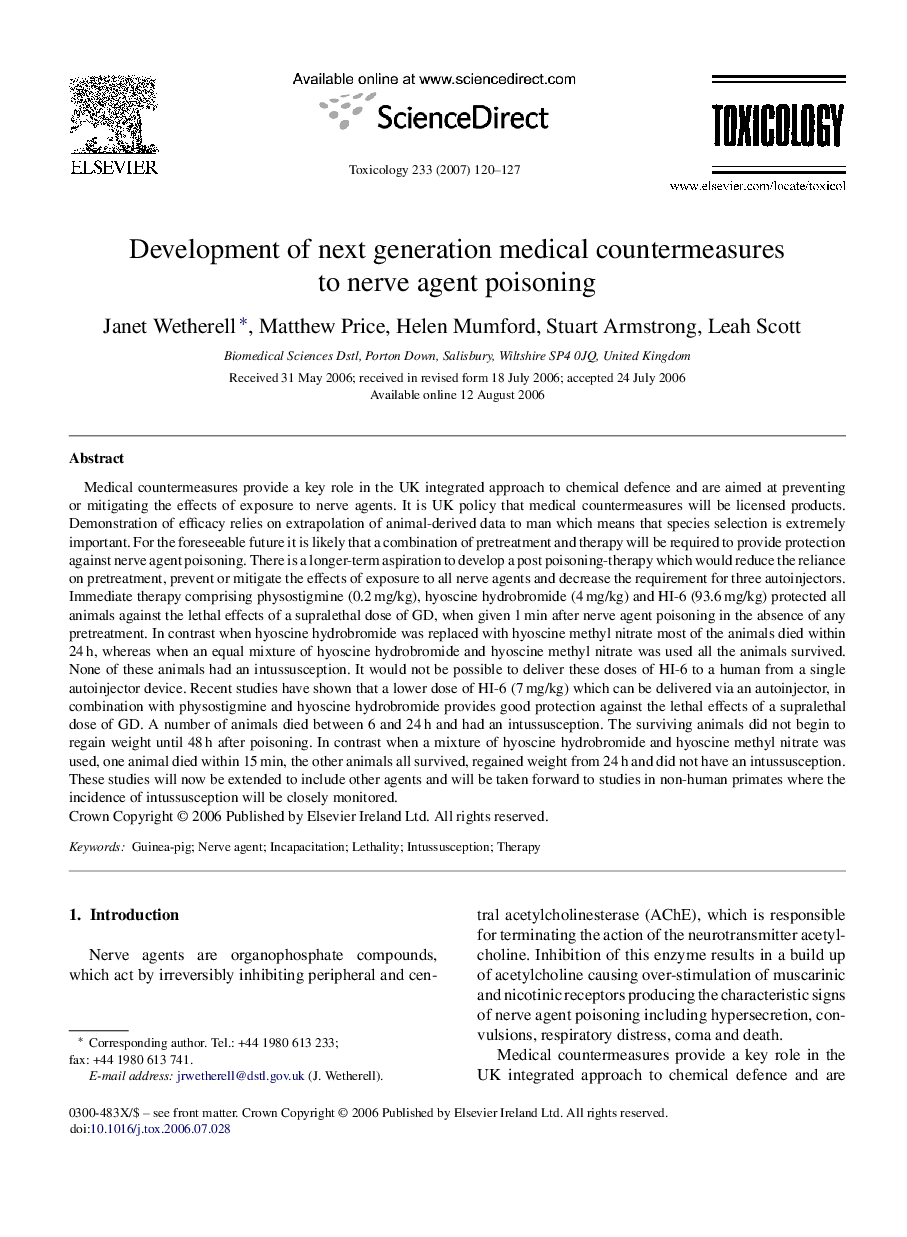| کد مقاله | کد نشریه | سال انتشار | مقاله انگلیسی | نسخه تمام متن |
|---|---|---|---|---|
| 2597871 | 1562423 | 2007 | 8 صفحه PDF | دانلود رایگان |

Medical countermeasures provide a key role in the UK integrated approach to chemical defence and are aimed at preventing or mitigating the effects of exposure to nerve agents. It is UK policy that medical countermeasures will be licensed products. Demonstration of efficacy relies on extrapolation of animal-derived data to man which means that species selection is extremely important. For the foreseeable future it is likely that a combination of pretreatment and therapy will be required to provide protection against nerve agent poisoning. There is a longer-term aspiration to develop a post poisoning-therapy which would reduce the reliance on pretreatment, prevent or mitigate the effects of exposure to all nerve agents and decrease the requirement for three autoinjectors. Immediate therapy comprising physostigmine (0.2 mg/kg), hyoscine hydrobromide (4 mg/kg) and HI-6 (93.6 mg/kg) protected all animals against the lethal effects of a supralethal dose of GD, when given 1 min after nerve agent poisoning in the absence of any pretreatment. In contrast when hyoscine hydrobromide was replaced with hyoscine methyl nitrate most of the animals died within 24 h, whereas when an equal mixture of hyoscine hydrobromide and hyoscine methyl nitrate was used all the animals survived. None of these animals had an intussusception. It would not be possible to deliver these doses of HI-6 to a human from a single autoinjector device. Recent studies have shown that a lower dose of HI-6 (7 mg/kg) which can be delivered via an autoinjector, in combination with physostigmine and hyoscine hydrobromide provides good protection against the lethal effects of a supralethal dose of GD. A number of animals died between 6 and 24 h and had an intussusception. The surviving animals did not begin to regain weight until 48 h after poisoning. In contrast when a mixture of hyoscine hydrobromide and hyoscine methyl nitrate was used, one animal died within 15 min, the other animals all survived, regained weight from 24 h and did not have an intussusception. These studies will now be extended to include other agents and will be taken forward to studies in non-human primates where the incidence of intussusception will be closely monitored.
Journal: Toxicology - Volume 233, Issues 1–3, 20 April 2007, Pages 120–127